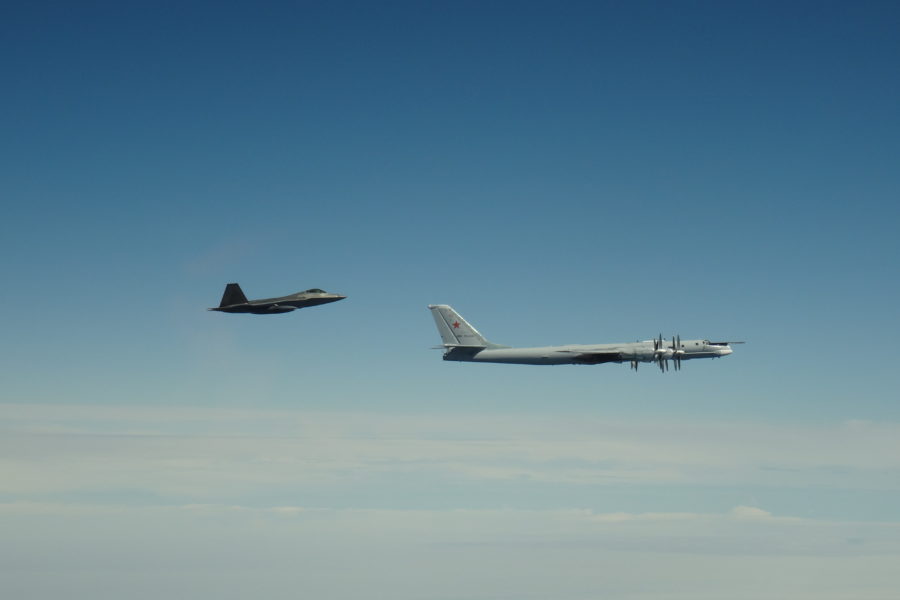U.S. fighter jets intercepted six Russian warplanes off the coast of Alaska on May 11 while a large multinational U.S.-led military exercise was underway in the state, the U.S. military announced.
North American Aerospace Defense Command (NORAD) detected and intercepted a mix of Russian bombers, tankers, and fighters in the Alaska Air Defense Identification Zone (ADIZ). The ADIZ serves as an early-warning buffer zone beyond U.S. airspace.
“These flights occurred as several planned large-scale U.S. military training exercises are ongoing within Alaska,” NORAD said in a statement. The command stressed the Russian planes remained in international airspace.
The Russian aircraft were Tu-95 Bear bombers, Il-78 tankers, and Su-35 Flanker-E fighters. The NORAD intercept mission included F-16 Fighting Falcons, F-22 Raptors, KC-135 Stratotankers, and E-3 Sentry AWACS.
“It’s not the first Russian flight,” Pentagon Press Secretary Brig. Gen. Patrick S. Ryder told reporters May 15. “It probably won’t be the last.”
Ryder said that the U.S. “responded appropriately.”
Exercise Northern Edge 23 is ongoing in Alaska. Northern Edge is a massive multinational exercise involving the U.S., U.K., and Australian militaries led by U.S. Indo-Pacific Command. Thousands of American service members, five ships, and more than 150 aircraft are participating, according to officials. The roughly two-week long exercise began May 4.
“According to U.S. Northern Command, Russian military aircraft have flown in our ADIZ during large-scale U.S. exercises on occasion, so the timing of this most recent activity is not something considered particularly out of the ordinary,” Ryder added later in a written statement.
Northern Edge is practicing “multi-domain operations designed to provide high-end, realistic warfighter training, develop and improve joint interoperability, and enhance the combat readiness of participating forces,” according to Pacific Air Forces. The exercise is taking place “in and over” the Joint Pacific Alaska Range Complex and the Gulf of Alaska.
NORAD did not detail how many of each type of aircraft—Russian or American—were involved in the episode, or if the American aircraft that conducted the intercept are regularly assigned to NORAD. With Northern Edge ongoing, the U.S. has significant airpower in the area.
“NORAD tracks and positively identifies all military aircraft that enter the ADIZ, routinely monitors aircraft movements, and as necessary, escorts them from the ADIZ,” the joint U.S.-Canadian command said in a statement. NORAD hosted its 65th anniversary celebration just a day after the intercept at its headquarters at Peterson Space Force Base, Colo.
In its statement, NORAD stressed it did not see the Russian flight as a direct threat to any U.S. or allied forces in Alaska, nor any other part of the U.S. and Canada.
“This Russian activity in the North American ADIZ occurs regularly and is not seen as a threat,” NORAD said.
A spokesperson for NORAD declined to provide further details of the incident.
U.S. intercepts of the Bear bombers and other Russian aircraft were commonplace during the Cold War. In 2007, Russian President Vladimir Putin ordered a resumption of long-range flights near North America, and NORAD intercepts of those aircraft have occurred with varying frequency since then, averaging six to seven incidents a year. It has happened at least three times before in 2023.
While Russia’s latest excursion into the ADIZ was not out of character, NORAD said, it was prepared to take action against a variety of threats if necessary.
“We remain ready to employ a number of response options in defense of North America and Arctic sovereignty,” the command said.
